

 |
 |
 |
|
| About Us |
|
Read Past Issues | Resources | Composer Links |
|
Passing Measures: An Evening with David Lang
The late demented comedian Andy Kaufman used to startle unsuspecting audiences occasionally by announcing that they should settle into their seats and get comfortable because he planned to read them The Great Gatsby aloud. There would be nervous laughter at first but the smiles faded into stunned incredulity as the audience realized that he was serious. He planned to read The Great Gatsy aloud--every single word of it. Some people headed for the exits immediately, others stayed for as long as they could stand it, a surprising number made into the end, which mercifully came about three and a half hours later. David Lang, the brilliant young American composer whose music was the subject of the first of this year’s Composer Portraits at Columbia’s Miller Theater, is neither late nor demented but one cannot help feeling that something of a similar test of audience affection must be afoot in “Passing Measures,” a hypnotic Sisyphusian trek in which the 20-person modern music ensemble Alarm Will Sound, the So Percussion Group, the Tarab Cello Ensemble, a Loose Band of Women (a seven-voice choral group), as well as 11 musicians from the Manhattan School of Music, and bass clarinetist Evan Ziporyn, all led by Alan Pierson, attempt to push a single, painfully slow chord up a very steep hill over and over and over again, only to slide back down, take a few deep breathes and start out all over again. “My piece is about the struggle to create beauty,” Lang writes. “A single very consonant chord falls slowly over the course of forty minutes. That is the piece. Every aspect of the piece is on display, however - magnified, examined, amplified, prolonged. The soloist's notes are impossibly long, requiring frequent drop-outs for breath and for rest. The players are all instructed to play as quietly as possible, and then are amplified at high volume, in order to make their restraint an issue of the piece. Four percussionists scrape pieces of junk metal from start to finish, as if to accompany the consonance of the chords with sounds of dirt and decay.” The objective seemed to be to weave a protective, mantra-like musical cocoon around listeners so they could take their minds on a mini-Club Med vacation, perhaps to a chill-out zone in a parallel universe, or an ear spa for the urban sound weary. In its recorded form, Passing Measures - Canteloupe, the piece actually delivers just that meditative quality. I’ve played “Passing Measures” at home many times and always enjoyed it enormously but listening to it live in a concert hall is a more demanding experience. Maybe it was the over heated auditorium or the distraction of the overcrowded stage but starting at about the 35 minute mark (I didn’t have a stop watch going but it seemed to me that Pierson kept the piece going way past the length of the recorded version), audience members started disappearing, first in dribs, then in droves. Even worst, the musicians started to look exhausted and bored. Bottom line on the love meter: I'd say the audience, the orchestra and I all liked David much better at 35 minutes than we did at the 45 minute mark. As fans of Lying. Cheating. Stealing know, Lang has a wonderful rhythmic sense and more successful was another new piece called "So-Called Laws of Nature" performed by the So Percussion Group, four mallet-wielding percussionists who mercilessly beat up an assortment of ceramic bowls and teacups and other objects that the score directs them to acquire themselves. (One envisions a befuddled security guard at K-Mart eyeing these guys suspiciously as they walk around the aisles clunking the tea cups for pitch and timbre.) Altogether, it’s a high-octane romp over pieces of junk metal, ceramic, planks of wood, and drums with the players moving in perfect and dizzying unison throughout. My favorite piece of the evening was the opening work, "Increase," another premiere, performed by the gifted Alarm Will Sound. It is basically 10 minutes of small, recurring riffs and gestures, grounded by a slowly building two-note drone and occasional ominous pedal tones. The effect is rather like listening to a Berio minature from which a grand Richard Strauss theme is constantly threatening to break out. The tension was exquisite and Alan Pierson conducted for maximum effect. The
length was about right, too.
Miller Theater
|
|
A Little Water Music
Temple
University Concert Choir presented a concert of new American choral music,
The
opening piece, To Be Sung on the Water (1969) by Samuel Barber,
In
a Philadelphia premiere, Rain Chant (2002) by R. Murray Schafer is an
Temple
graduate composition student Girard J. Kratz adds harp and vibraphone
The
second half of the concert featured music by Meredith Monk that explores
The
work was not overly
The
concert closed with a Native American chant as recessional. The
|
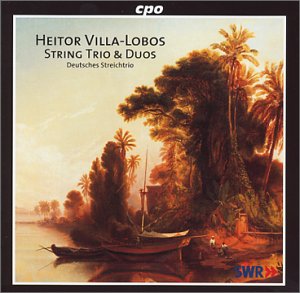
String Trio & Duos Composer: Heitor Villa-Lobos Cpo Records - #999827 One of the great pleasures of CD collecting in recent years has been the reemergence of an enormous amount of recorded Villas-Lobos' chamber music. Impossibly lush melodies, exotic rhythms, otherworld spirtiuality in extremely vivid performances. Music to love and listen to over and over again. |
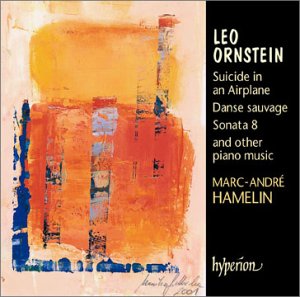
Piano Music Composer: Leo Ornstein Performer: Marc-Andre Hamelin Label: Hyperion - #67320 There was a time, in the 1920s, when Ornstein's name was mentioned in the same breath as Stravinsky and Schoenberg, and he lived long enough (he died earlier this year at 109) to see his music come and go in fashion several times. One thing is certain: he has never had--and probably never will have again--as formidable and effective an advocate as Marc-Andre Hamelin, the brilliant Canadian pianist, who makes a convincing case that Ornstein's early admirers had it right--he belongs in the same company as Stravinsky and Schoenberg. |
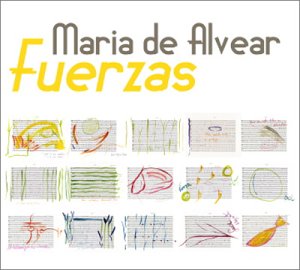
Fuerzas [for viola] Composer: Maria de Alvear Performer: Christina Fong OgreOgress Productions Christina Fong is among the most adventuresome of modern violin and viola players having lovingly committed to CD modern masterpieces by John Cage, Morton Feldman, Alan Hovhaness and now the Spanish composer Maria de Alvear's glorious extended 1994 meditation for viola. Engaging and important music from one of the most inventive of the independent CD labels. OrgreOgress Productions
|
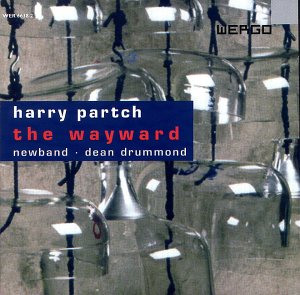
The Wayward Composer: Harry Partch Conductor: Dean Drummond Ensemble: Newband Wergo - #6638 Harry Partch was iconoclastic American composer, musical theorist, philosophic instrument builder, raconteur, artist and hobo and it is Partch's king of the road life from which Dean Drummond and Newband draw the inspiration for The Wayward. "Found" hobo poems serve as fodder for Patch style "just intonation" or what might be called American plainsong. |
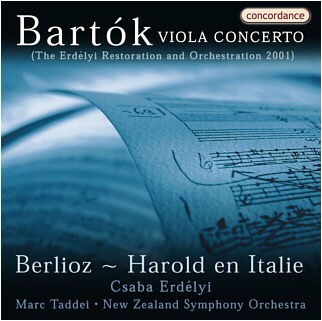
Viola Concerto Composer: Bela Bartok Performer(s): Csaba Erdélyi, New Zealand Symphony Orchestra Concordance CCD03 Here's something irrestible to collectors--the first release of the long awaited recording of Csaba Erdelyi's Restoration and Orchestration of the Bartok Viola Concerto, which was left in an uncompleted form when the composer died in 1945. For many years the only way in which the work could be heard was in the completion by Hungarian Tibor Serly, which nobody much liked. Erdelyi has worked for many years on a better restoration and has produced, after exhaustive study and consultation, a number of interim 'completions'. Now he has arrived at his definitive version. The trick is that for copyright reasons, the CD is not available in this Hemisphere but can be ordered directly from New Zealand. Click on the cover picture for details. |

Black Sounds Composer: George Rochberg Performers: Boston Modern Orchestra Project Gil Rose, conductor Naxos - #8559120 George Rochberg was born in 1918, and became one of North America's most influential composition teachers. A rabid atonalist Rochberg abandoned that stance following the death of a son and began to construct his music out of both tonal and atonal languages. In so doing, he dramatically reinterpreted the notion of stylistic uniformity that had been a hallmark of the Western aesthetic since antiquity. By including these diverse musics, Rochberg believed that he had expanded the emotional range that modern music was able to express. He had found a contemporary language that could both bear the weight of despair and point to transcendence. And—unlike either strict serialism or aleatoric composition—it was a language that was pointedly individualistic. |
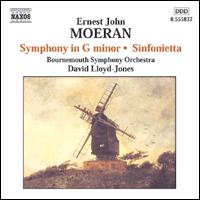
Symphony in G Minor Composer: E.J. Moeran Naxos - #8555837 Our usual monthly bow to English country estates, chintz and big slobbering dogs. Every culture has some composer or artist or writer who is famous for being unknown: E.J Moeran is England's claim to unsung genius. |
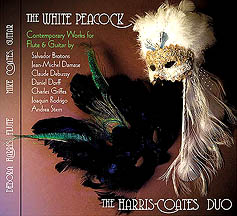
The White Peacock Composer: Brotons, Damase, Dorff Griffes, others Performer: Debora Harris, Mike Coates Ensemble: Harris-Coates Duo Barking Dog Records Delightful collection of contemporary works for flute and guitar including a new transcription of American composer Charles T. Griffes' "The White Peacock." This piece, originally written for piano in 1915 and later scored by Griffes for full orchestra, was transcribed and arranged by Mike Coates for flute, guitar and bassoon -- this recording features guest artist Russell Peterson on bassoon. Also, contains lovely piece by Debussy and Rodrigo. |
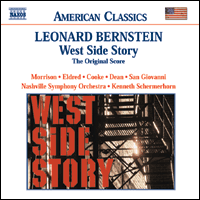
West Side Story Composer: Leonard Bernstein Performers: Kenneth Schermerhorn and the Nashville Symphony Orchestra Naxos - 8559126 Oh, no, Maria. No. Ready or not the "composer's version" of the now overly familiar score has arrived, courtesy of Bernstein disciple Kenneth Schermerhorn and the first-rate Nashville orchestra.
|
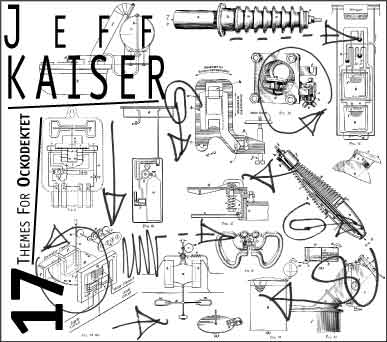
17 Themes for Ockodektet Composers: Jeff Kaiser Performers: The Jeff Kaiser Ockodektet pfMentum Jeff Kaiser is a composer, trumpet player, conductor, and private music instructor residing in the cozy town of Ventura, CA, where he does the lion's share of his performances and turns out really nicely packaged CDs that are as funky to listen to as they are Zen-like to contemplate. Think big band on acid on one of Dizzy's most innovative nights. |
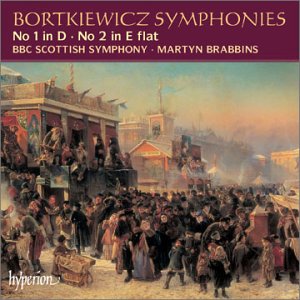
Symphonies No 1 and 2 Composer: Serge Bortkiewicz Conductor: Martyn Brabbins Label: Hyperion - #67338 Audio CD (October 8, 2002) ASIN: B00006GO65518 Frankly, I never heard of the guy until this CD appears in my mailbox but if you like fiery late Romantic Russian music that stirs the soul this one will get your mojo working . |
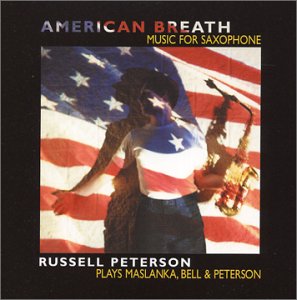
American Breath Composer: Larry Thomas Bell, Russell Peterson David Maslanka Performer: Russell Peterson Barking Dog Records Saxophonist
Russell Peterson plays David Maslanka's Sonata for Alto Saxophone and Piano,
Larry Thomas Bell's Mahler in Blue Light and his own Concerto for alto
Saxophone and Percussion Orchestra. Distinctly American music, masterfully
played and recorded. Highly recommended.
|
 |
Publisher: Duane Harper Grant (212) 582-4153 Editors: Jerry & Suzanne Bowles (212) 582-3791 Contributing Editor: Deborah Kravetz (C) Sequenza/21 LLC 2000 |
 |
Search WWW Search www.sequenza21.com |